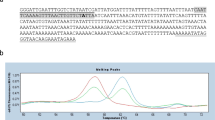Abstract
The utilization of soybean products as food ingredients and foods is often limited by their beany-grassy flavor. Eliminating seed lipoxygenase (LOX) isozymes 1, 2 and 3 reduces the amounts of volatile off-flavor compounds in stored soybeans and soy products significantly, but they are not completely eliminated. The present work presents evidence that lipoxygenase-null (LOX-null) soybeans contain a LOX-like enzyme that is responsible for the off-flavors in LOX-null soybeans. Volatiles production in triple LOX-null soybeans was terminated by heat treatment, which suggests an enzymatic cause to the off-flavors. The source is LOX-like in that the volatile compounds produced are similar to LOX-generated products of polyunsaturated fatty acids. Oxygen was consumed when a LOX-null protein solution was incubated with crude soybean oil suggesting that the enzyme catalyzed oxygen consuming reactions. The generation of flavor compounds was inhibited by the typical LOX inhibitors propyl gallate and nordihydroguaiaretic acid (NDGA). The enzyme appears to be more active with phosphatidylcholine than with other lipid substrates. The cause of the off-flavors in LOX-null beans appears to have enzyme-like characteristics. This is the first report of the initial characterization of this LOX-like enzyme.




Similar content being viewed by others
Abbreviations
- LOX:
-
Lipoxygenase enzyme
- SPME:
-
Solid phase microextraction
- PC:
-
Phosphatidyl choline
- PI:
-
Phosphatidyl inositol
- PE:
-
Phosphatidyl ethanolamine
- NDGA:
-
Nordihydroguaiaretic acid
- PG:
-
Propyl gallate
- FFA:
-
Free fatty acid
References
Glickman MN, Klinman JP (1996) Isotopic probes of the soybean lipoxygenase-1 mechanism. In: Piazza GJ (ed) Lipoxygenase and lipoxygenase pathway enzymes. AOCS Press, Champaign, pp 95–115
Narvel JM, Fehr WR, Welke GA (1998) Agronomic and seed traits of soybean lines lacking seed lipoxygenases. Crop Sci 38:926–928
Torres-Penaranda AV, Reitmeier CA, Wilson LA, Fehr WR, Narvel JM (1998) Sensory characteristics of soymilk and tofu made from lipoxygenase-free and normal soybeans. J Food Sci 63:1084–1087
Torres-Penaranda AV, Reitmeier CA (2001) Sensory descriptive analysis of soymilk. J Food Sci 66:352–356
Boue SM, Shih BY, Carter-Wientjies CH, Cleveland TM (2005) Effect of soybean lipoxygenase on volatile generation and inhibition of Aspergillus flavus mycelial growth. J Ag Food Chem 53:4778–4783
Iassonova DR, Beattie SE, Hammond EG (2006) Enzymatic generation of flavors in lipoxygenase-null soybeans. 98 AOCS annual meeting, Quebec City, Quebec
Hammond EG, Duvick DN, Fehr WR, Hidebrand DF, Lacefield EC, Pfeiffer TW (1992) Rapid screening techniques for lipoxygenases in soybean seeds. Crop Sci 32:820–821
Shen N, Fehr W, Johnson L, White P (1996) Oxidative stabilities of soybean oils that lack lipoxygenases. J Am Oil Chem Soc 73:1327–1336
Nishiba Y, Furuta S, Hajika M, Igita K, Suda I (1995) Hexanal accumulation and DEBTA value in homogenate of soybean seeds lacking two or three lipoxygenase isozymes. J Agric Food Chem 43:738–741
Macrï F, Braidot E, Petrussa E, Vianello A (1994) Lipoxygenase activity associated to isolated soybean plasma membranes. Biochim Biophys Acta 1215:109–114
Axelrod B, Cheesbrough TM, Laakso S (1981) Lipoxygenase from soybeans. Meth Enzymol 71:441–451
Braidot E, Micolini S, Risso A, Macri F, Vianello A (2003) Immunochemical evidence for the presence of a lipoxygenase-1 in isolated plasma membranes from soybean cotyledons. Plant Sci 164:9–16
Nelson MJ (1996) Fatty acid radicals and mechanism of lipoxygenases. In: Piazza GJ (ed) Lipoxygenase and lipoxygenase pathway enzymes . AOCS Press, Champaign, pp 80–94
Brash AR (1999) Lipoxygenases: occurrence, functions, catalysis, and acquisition of substructure. J Biol Chem 274:23679–23682
Brash AR, Ingram CD, Harris TM (1987) Analysis of a specific oxygenation reaction of soybean lipoxygenase-1 with fatty acids esterified in phospholipids. Biochem 26:5465–5471
Huang LS, Kim MR, Sok DE (2006) Linoleoyl lysophosphatidylcholine is an efficient substrate for soybean lipoxygenase-1. Arch Biochem Biophys 455:119–121
Acknowledgments
The research was supported by the Center for Crops Utilization and Research, Iowa State University, Ames, IA. Dr. Walter Fehr is thanked for his assistance in obtaining the soybeans.
Author information
Authors and Affiliations
Corresponding author
About this article
Cite this article
Iassonova, D.R., Johnson, L.A., Hammond, E.G. et al. Evidence of an Enzymatic Source of Off Flavors in “Lipoxygenase-Null” Soybeans. J Am Oil Chem Soc 86, 59–64 (2009). https://doi.org/10.1007/s11746-008-1314-y
Received:
Revised:
Accepted:
Published:
Issue Date:
DOI: https://doi.org/10.1007/s11746-008-1314-y




